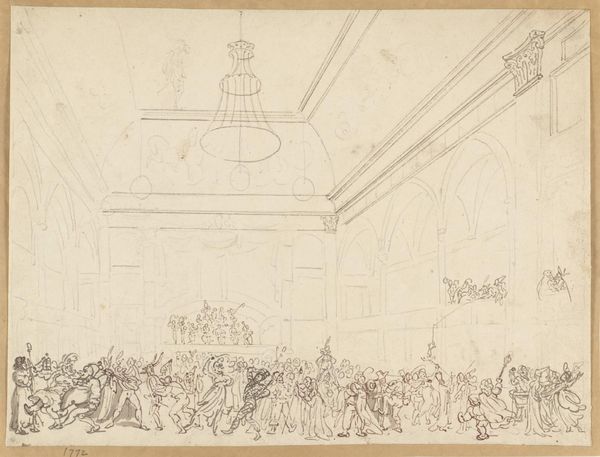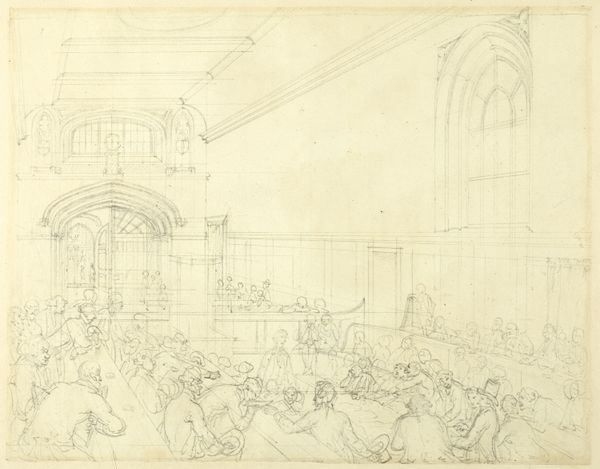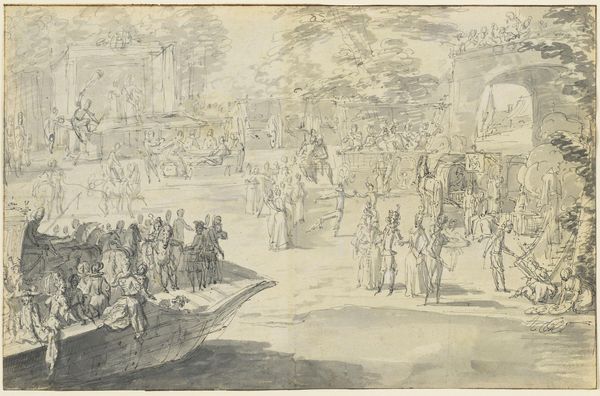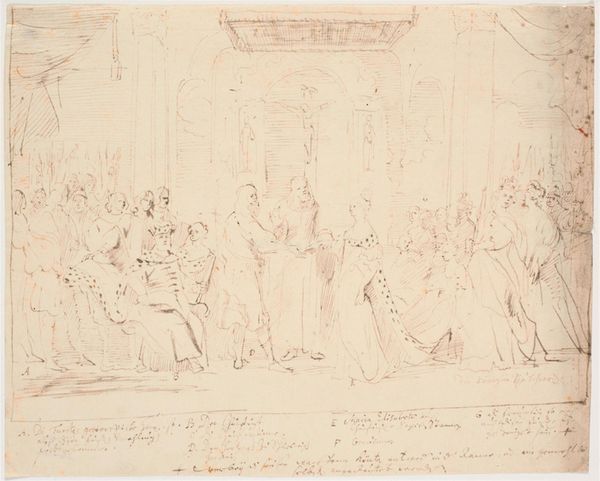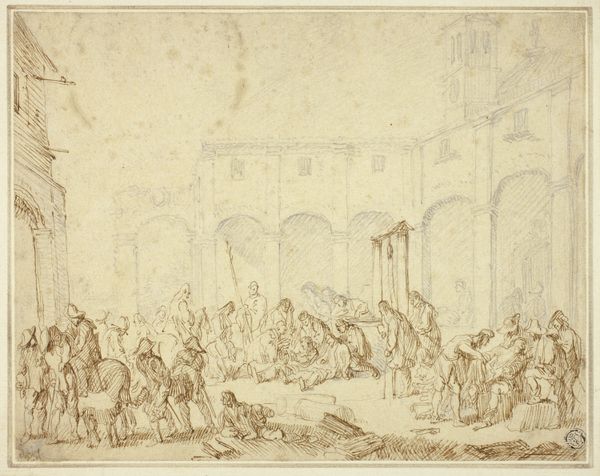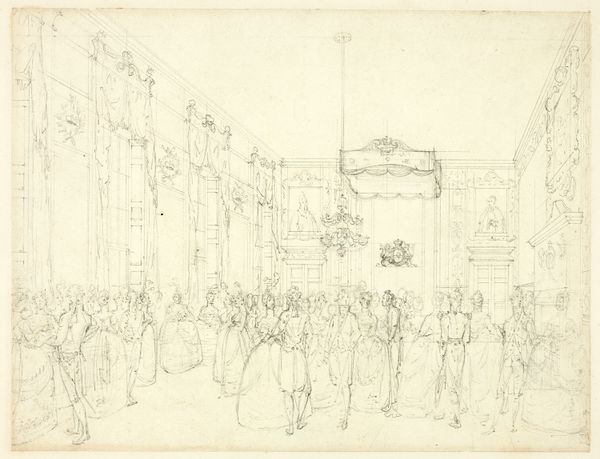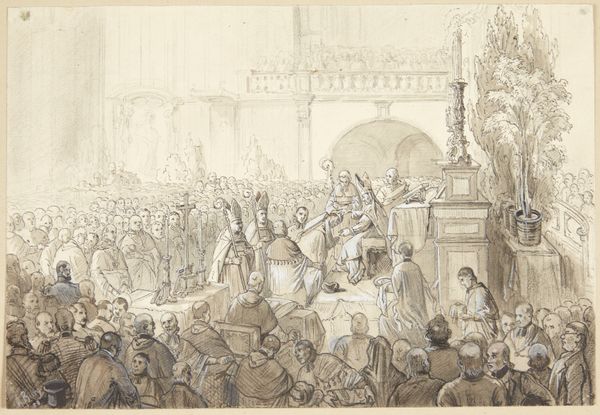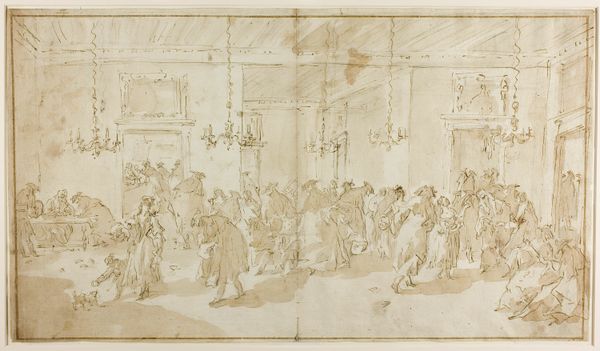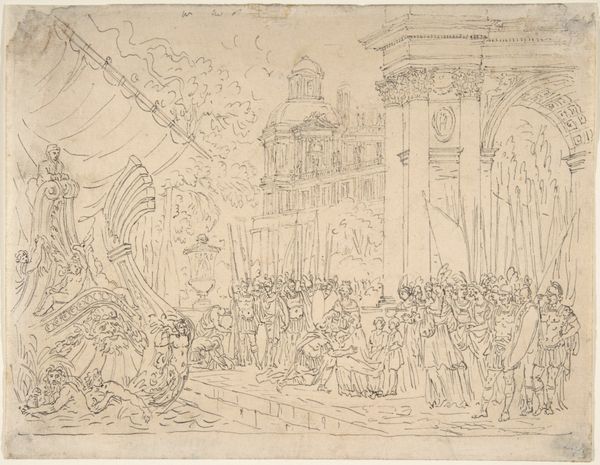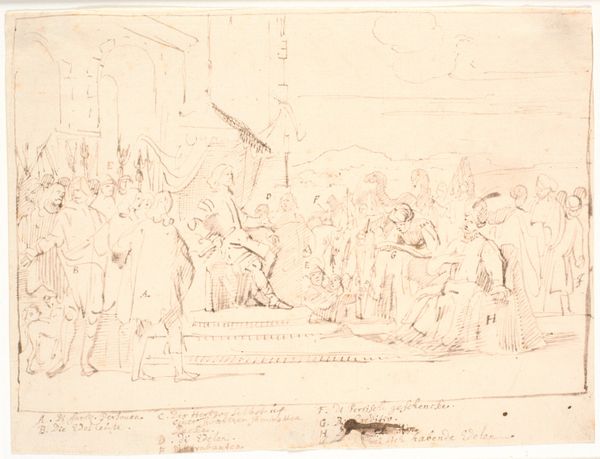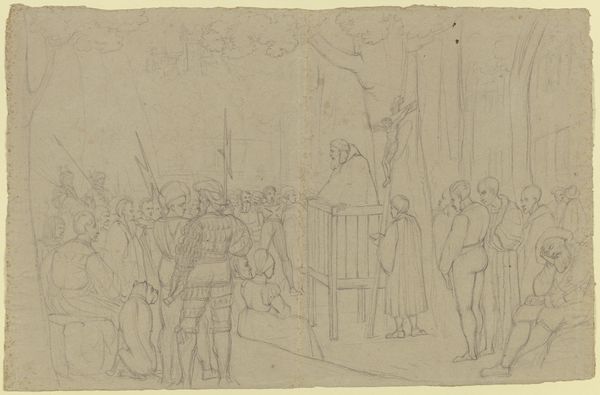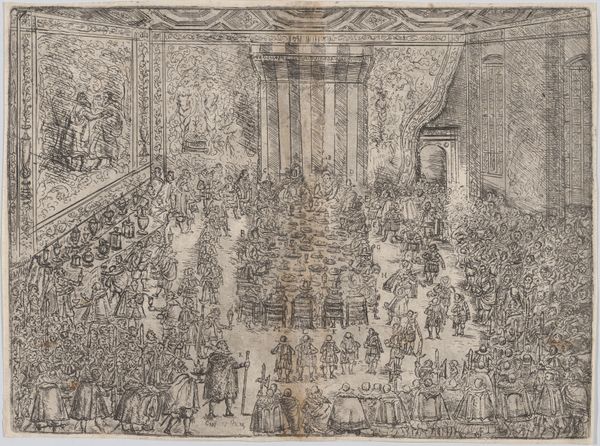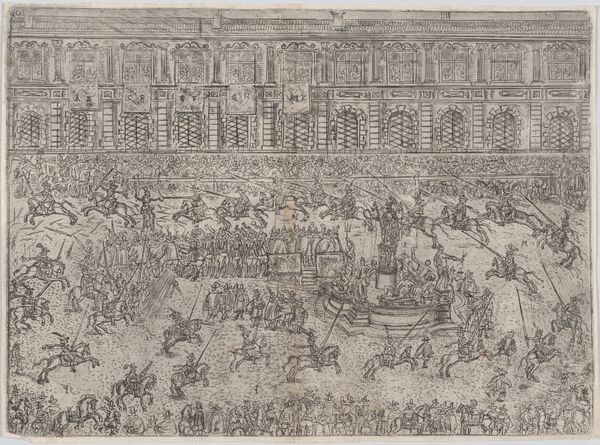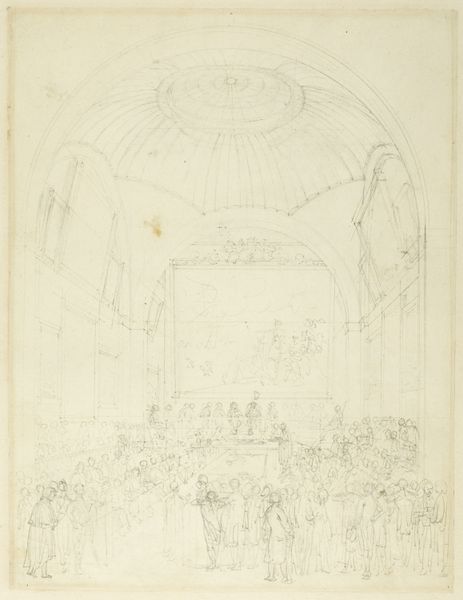
drawing, ink, graphite, architecture
#
drawing
#
baroque
#
landscape
#
etching
#
ink
#
graphite
#
history-painting
#
architecture
Copyright: Public Domain
Editor: This ink and graphite drawing is called "An einem Stadttor empfängt der Magistrat ein Heer." It's by Guido Reni, though we don't have a specific date for it. The way the lines build up this scene, there's almost a documentary quality to it, despite its obviously historical subject matter. How do you interpret this work? Curator: Looking at Reni's process here – the graphite underdrawing reinforced with ink – gives us insight into the economics of art production in the Baroque period. Drawings like these often served as preparatory sketches. But what level of craft or artistic labour was considered more valuable, the sketch or the finished painting? Editor: That's an interesting question. So, this drawing might have been seen as a step towards a more ‘valuable’ piece? Curator: Precisely. It's easy to focus on the triumphant narrative it depicts – a magistrate welcoming an army, solidifying civic authority – but a materialist approach urges us to think about what went into it. Consider, where did Reni source his paper, ink, and graphite? How were they made and who was involved in their production and distribution? Editor: I never really thought about that, but the cost and availability of materials must have affected the artistic choices of the time. Was drawing accessible to everyone? Curator: No. The quality and availability of materials dictated who could make art. The "craft" was not seen as equal, it was a step in the ‘creation’ process of a piece, to become ‘art’. Also, this isn't just a historical scene; it is an insight into artistic workshops and the distribution networks for materials. Editor: Thinking about it that way, I’m struck by how this drawing documents the labour and materiality behind image making itself. It shifts my attention from the “who” to the “how” behind history-painting, like labor, access, and networks. Curator: Exactly! And that perspective transforms how we appreciate art, wouldn't you say?
Comments
No comments
Be the first to comment and join the conversation on the ultimate creative platform.
